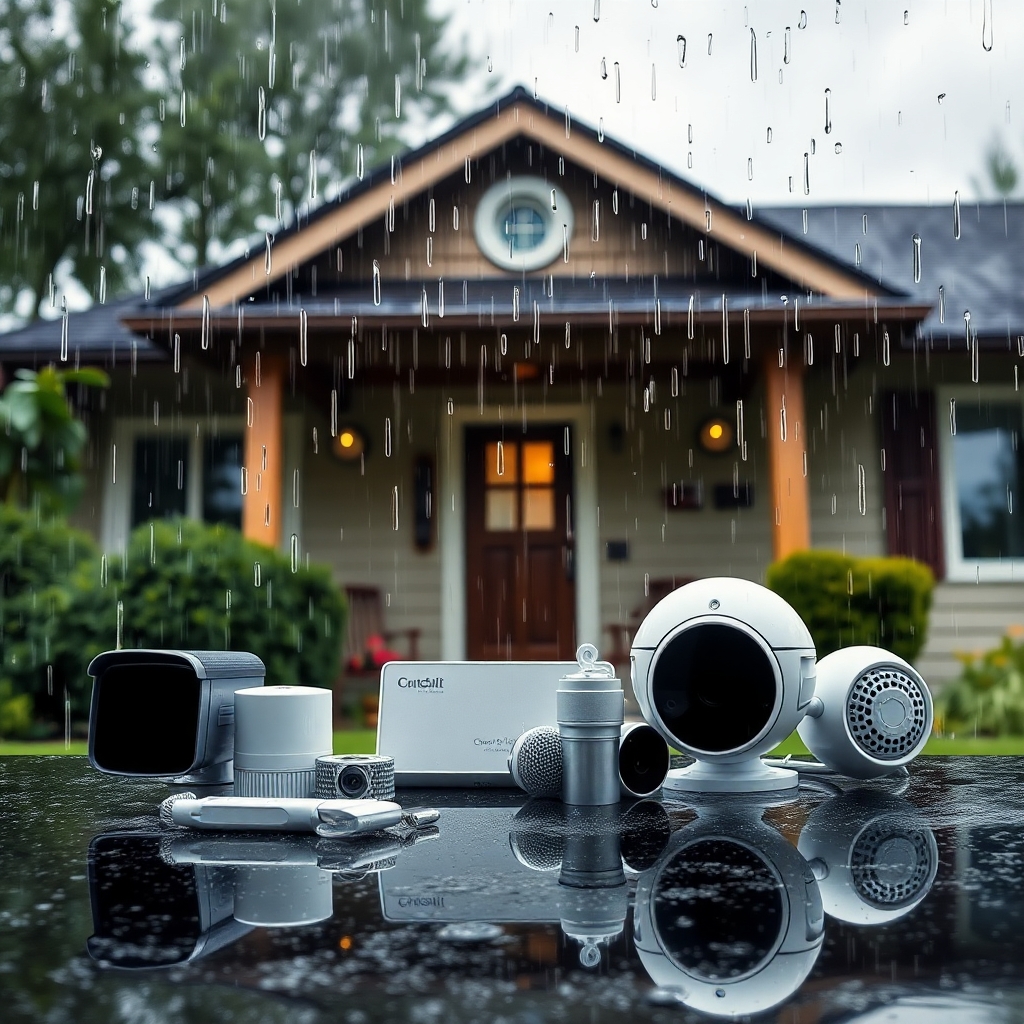
Introduction
The world is changing faster than we think. Gone are the days when we used a metal single lock to protect the home. Now, home security is always the top priority for the house owners. Note that in 2025, the security threats have evolved remarkably. The traditional methods of using a single lock are not enough for protection; we need to go for some smart technology for better protection. With technological developments, criminals have become more sophisticated, forcing homeowners to upgrade their security systems. So, let’s examine the top home security trends 2025 to create a truly safe and secure home.
This article explores the important components of a modern home security system and highlights the latest technology trends in the year 2025. Whether you are a homeowner looking to improve your home security setup or someone interested in the future of smart home security, surely this guide will provide valuable contents.
1. The Evolution of Home Security Systems
1.1 Traditional vs. Modern Home Security Systems
In the past, home security relied heavily on simple alarm systems, heavy-duty locks, and neighborhood watch programs, forget about all these old things you used. However, with the rise of the Internet of Things (IoT), artificial intelligence (AI), and cloud-based technologies, security systems have transformed into highly advanced and intelligent.
Just think of a scenario, you were out of the station or on vacation. Suddenly your smart tech thermostat detects a drop-down in temperature. It sends alert messages to your home security system. Then the smart system checks for any door or window that is open and sends message to your phone. This level of security is not only convenient but it’s a powerful security measure.
1.2 Why Home Security is More Important in 2025
2. Essential Components of a Modern Home Security System
In the year 2025, home security is more critical than ever for more reasons but here
We discuss a few things:
• Burglaries and Home Invasions: Criminals are using more advanced tools and technology to bypass traditional security measures very easily. To protect the home from them, we need more sophisticated technology.
• Cyber Threats: With smart home devices connected to the internet, hacking threats have increased in large.
• Remote Living Trends: Nowadays many people go out of home for jobs, vacations, etc., much more often than before. Many people work remotely, requiring better home security solutions to protect homes and valuable equipment they own
.
• Technological Advancements: AI and automation have made home security more effective and accessible than ever before.
Artificial intelligence AI is no longer science fiction; it’s the intelligent brains behind the next generation of home security. AI-powered cameras can differentiate between a family member, a pet, and a suspicious individual, minimizing false alarms. They can even study your routines and learn. Then they alert you when your routine activity changes.

You need to learn the important components used for home security systems.
2.1 Smart Surveillance Cameras
Surveillance cameras are the backbone of any security system. In 2025, modern cameras come with:
• AI-controlled facial recognition: Helps identify your known visitors and alerts homeowners about strangers entry.
• Motion detection with smart analytics: Differentiates between humans, animals, pets, and objects to reduce false alarms.
• 4K resolution and night vision: Provides crystal-clear images even in low-light conditions.
• Cloud and local storage options: Ensures footage is securely stored and easily accessible.
2.2 Smart Doorbell Cameras
Smart doorbells have become a must-have security component. They include:
• Two-way audio communication: Allows homeowners to talk to visitors remotely.
• AI-based visitor identification: recognizes frequent guests and alerts homeowners about unknown persons.
• Package detection: alerts when a package is delivered and monitors for potential theft.
2.3 Smart Locks & Biometric Access
Traditional locks are being replaced by smart locks that offer enhanced security features.
• Fingerprint and facial recognition locks: Only allow authorized individuals access.
• Remote access via smartphone apps: Lock and unlock doors sitting anywhere in the world.
• Temporary access codes: Ideal for guests, babysitters, or service workers
.
• Blockchain-based security: provides an extra layer of protection against hacking.
2.4 Alarm Systems and Intrusion Detection
Modern alarm systems are more than just loud sirens. They now include:
• Motion sensor alarms: Detects movement inside and outside the house.
• Glass-break detectors: Identifies the sound frequency of breaking glass to trigger an alarm.
• AI-powered false alarm prevention: reduces unnecessary alerts by learning normal activity patterns.
2.5 Home Automation & Security Integration
Smart home automation integrates security with everyday convenience:
• Smart lighting systems: Turn on automatically when motion is detected.
• Voice-controlled security settings: Adjust security modes using voice assistants like Alexa or Google Assistant.
• AI-driven automation: predicts and responds to unusual behavior in real-time.
• Integration with wearable devices: alerts sent directly to smartwatches or fitness bands.
2.6 Cybersecurity for Smart Home Protection
With smart homes becoming the norm, cybersecurity is an essential aspect of home security.
• End-to-end encryption: Protects data from being intercepted by hackers.
• AI-based anomaly detection: Identifies suspicious activities and potential hacking attempts.
• Multi-factor authentication (MFA): Ensures that only authorized users can access security systems.
• Secure cloud storage: Prevents unauthorized access to security footage and personal data.
2.7 Emergency Response Systems
Emergency response systems ensure immediate action during crises.
• Smart smoke and fire detectors: Automatically notify emergency services in case of fire.
• Gas leaks and carbon monoxide detectors: warn homeowners about hazardous air quality.
• Panic buttons: Provide instant alerts to emergency contacts or authorities.
• AI-based hazard prediction: uses data analytics to detect potential dangers before they shoot up.

3. The Future of Home Security in 2025 and Beyond
3.1 AI & Machine Learning in Home Security
AI and machine learning are making security systems more intelligent by:
• Learning user habits to identify unusual activities.
• Predicting potential security threats before they happen.
• Enhancing facial recognition accuracy.
3.2 The Role of 5G in Home Security
5G technology is revolutionizing home security by:
• Enabling faster response times for real-time security alerts.
• Supporting multiple connected devices without delays.
• Improving remote monitoring capabilities with higher data speeds.
3.3 Cloud vs. Edge Computing in Security Systems
• Cloud-based security: Stores data remotely, allowing access from anywhere.
• Edge computing: Processes data locally on the device, reducing lag and improving
response times.
3.4 Eco-Friendly Security Solutions
Sustainability is now a factor in home security, with solutions like:
• Solar-powered security cameras: Reduce energy consumption and ensure functionality during power outages.
• Energy-efficient sensors: Use minimal power while providing maximum security.
3.5 Smart Neighborhood Security
Communities are coming together with:
• AI-based neighborhood watch programs: Use data to monitor suspicious activities.
• Community-driven security apps: Allow residents to share real-time security updates.
• Police and security service integration: Ensures faster emergency response times.
4. Choosing the Right Home Security System for Your Needs
Not every home requires the same level of security. Factors to consider include:
• Home size and layout: Determines the number and type of security devices needed.
• Budget: Some security solutions are more affordable than others.
• DIY vs. Professional Installation: DIY systems are easier to install, while professional installations offer expert-level security.
• Compatibility with existing smart home devices: Ensures smooth integration.

5. Conclusion
Home security is no longer just about locks and alarms—it’s about smart technology, AI-driven automation, and advanced cybersecurity. In 2025, security systems will be more intelligent, efficient, and user-friendly than ever before. By staying informed about the latest trends and integrating modern security components, homeowners can ensure a safer and smarter living environment.
At Shielded Nest, we’re here to help you navigate this exciting landscape and build the ultimate home security system. Investing in a robust home security system not only protects your property and loved ones but also gives you peace of mind. Stay updated, stay safe!
from: Annke Security Technology Inc
